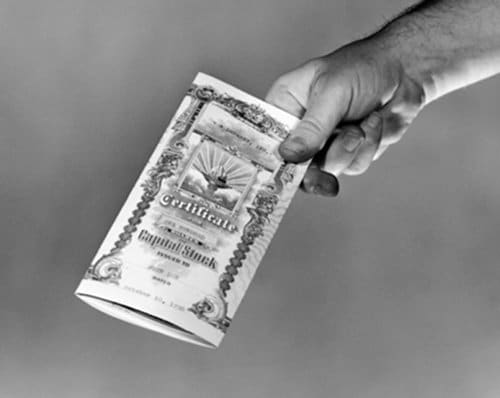
Editor’s Note: This is a guest post from Jeff Rose.
As a financial planner, I spend a great deal of my time advising clients on how and where to invest their money. Between bonds, mutual funds, ETFs, and even individual stocks that offer dividends, there are a huge number of options out there for investors to grow their money in the stock market.
However, the stock market can be volatile in ways that the average investor may find difficult to watch. When my clients feel jerked around by the market’s ups and downs, they’ll often ask me for advice on alternatives to investing in the stock market.
Here are nine possible investment alternatives that can also help you achieve your financial goals.
1. Real Estate
For many years, real estate was one of the most popular alternatives for investors who were skittish about the stock market. Unfortunately, it was also an investment that anyone who had watched home-flipping shows on HGTV thought they understood (including yours truly). Of course, we all know what happened in 2008 — and six years later many investors are still wary of the real estate market.
But in many markets, prices still haven’t entirely recovered from the crash, which means it’s possible for average investors to add real estate to their portfolios. In general, there are four accessible routes to real estate investment. I’ll share two that I’m familiar with and then I’ll have a legitimate real estate investor share his popular methods.
First is purchasing a rental property as an individual, and second is buying shares in a real estate investment trust (REIT).
Individually buying a rental property is pretty straightforward, but because you will have to invest money in upkeep and time into being a landlord, it’s not necessarily everyone’s cup of tea. Unless you use a management company — which will cut into your profits — you may find that being a landlord takes up too much of your time and resources.
A real estate investment trust, on the other hand, offers a less hands-on method of getting into the real estate market. A REIT (pronounced to rhyme with “treat”) works similarly to a mutual fund, except the investment is in real estate. Basically, the REIT is a group that invests in real estate properties, and allows investors to purchase shares of the REIT. These trusts receive tax benefits in exchange for paying most of their income to the shareholders. Investors can purchase shares of REITs on public exchanges, which means that the investment is pretty liquid. In addition, shares of REITs pay out regular dividends.
Brandon Turner from BiggerPockets.com has been investing in real estate since he was 21. Here’s what he had to offer on the topic of real estate investing:
There are two other popular methods of real estate that anyone could consider:
- Notes – you can actually invest in paper notes, second mortgages, etc. You can buy and sell notes just like real estate, and there are note brokers who handle this stuff.
- Crowdfunding Portals – recently with changing legislation, there has been a rush of new portals that allow individuals (primarily accredited investors) to join together through the web to fund real estate deals. Sites like RealtyMogul and Fundrise are leading the way in this exploding niche.
Keep in mind that rental property investing is not for the faint of heart. Unlike stocks or mutual funds — where you can simply rely on your broker to suggest and buy “winners” — real estate investing generally takes some active involvement on the part of the investor.
This doesn’t mean you need to spend your weekends and evenings fixing toilets and taking calls from tenants — but it does mean you need to do some research on how to calculate real estate returns, spend time discovering the best local markets to invest in, interview and hold accountable the best property managers to manage your tenants, and run your business like a business. This can be done with as little as a few hours a month — but it still does take some active involvement for the best returns.
If you do decide to invest in real estate, make sure you do your homework. Talk to experts like realtors, real estate investors, and your financial advisor. Real estate seems like a simple investment, but there is a lot that you might not consider. Just ask any home flipper who took a bath in 2008.
2. Art, Antiques, and Collectibles
Growing up my idea of a collectible was my favorite G.I. Joe: Snake Eyes.
Let me start by saying that you should never buy any piece of art or collectible unless you actually love it and enjoy it. That’s because the reason behind the creation of any artwork — from an oil painting to a Chippendale armoire to a comic book — is to speak to someone who will appreciate it. If it isn’t at least worth something to you — you may end up stuck with a piece that no one wants, even yourself.
That being said, artwork and collectibles can be a good place to invest your money, provided you’re in it for the long haul. That’s because your investment in a beautiful piece of art or rare stamp is not correlated to stock prices, unlike any investments you make in the stock market. So even if your stocks are down, the worth of your collectibles might be up. Also, individual artists and pieces can perform better than average, meaning your current investment could be worth a great deal more years down the road.
Of course, it’s important to remember that investing in such tangible assets means that your investment is not at all liquid — so you should only spend money on art that you can afford to have tied up, potentially for many years.
As with real estate, it’s important to research any art that you are interested in purchasing. Know what you are buying, and make sure you’re buying it for the right reasons.
Some good news for art and investing newbies: according to Michael Moses, retired New York University business professor and founder of Beautiful Asset Advisors, “low-priced art tends to outperform high-priced art [as an investment].”
3. Gold and Silver
Everybody wants to buy gold and everybody wants to buy silver. This is largely because the price of gold (and other precious metals) has escalated over the last couple of years.
You have to realize that gold is a risky investment, and it fluctuates just like an individual stock – sometimes more! That being said, it is a stock market alternative, so if you have a fear of the stock market, then investing in gold coins might be a viable option for you.
Todd Tressider, a financial coach and former hedge fund manger at FinancialMentor.com had this to say about gold:
The advantage of gold is it’s one of the few assets with low-to-negative correlation to stocks, thus providing a valuable portfolio diversifier. Unfortunately for gold investors, the yellow metal has failed to deliver much diversification benefit during recent deflationary bear markets. With that said, inflationary bear markets may see valuable downside protection from gold similar to the role Treasury bonds have enjoyed in recent years.
My blogging colleague Len Penzo offers some excellent advice about investing in gold and silver — although he views precious metals as insurance against a potential collapse of the dollar rather than as an investment.
4. Wine
Fine wine is not just a delicious accompaniment to your favorite steak dinner — it can also be a valuable investment.
Provided you go into wine investments with a clear understanding of which vintages and vineyards are the most sought-after, and what is necessary to protect your investment, you can expect to make a return of between 6 and 15 percent annually.
Of course, gaining that clear understanding is no small feat if you are not already a wine enthusiast. That’s because it will be necessary to invest in large quantities in order to reap a decent return (since 15% on a couple of bottles will hardly make the enterprise worth it), and your investment must be stored in a temperature- and humidity-controlled environment. Finally, you’ll need to keep very detailed records of your purchases to satisfy your future buyers — they will want to know the exact provenance of their beverage.
5. Peer-to-Peer Lending
One of my favorite financial benefits of the modern and innovative world is the rise of peer-to-peer lending.
This investment is just what it sounds like: you are lending money to a peer, and getting paid the interest rate. It’s beneficial for both parties — the borrower will often pay a lower interest rate than they would receive from a traditional bank, while the lender’s returns are often higher than what they could obtain through other investments.
I have personally invested through Lending Club, which, along with Prosper, are the top two peer-to-peer players out there. The thing I like most about peer-to-peer lending, especially through Lending Club, is that the money you invest is diversified.
Let’s say you invest $1,000. Of that $1,000, only $25-$50 would go to any one borrower, so if that particular borrower defaults, you don’t lose your entire investment. This is like buying stock in a mutual fund: if one of those stocks in that mutual fund goes belly up, you still have 99+ stocks in the fund still making you money.
Another great aspect of peer-to-peer lending is the low bar for entry: the minimum investment is only $25 for Lending Club.
Which peer-to-peer lender is best? I was curious myself so I started the Prosper Vs. Lending Club experiment and opened an account with each. As of now, both have been yielding me double-digit returns, and I haven’t had any defaults yet. I’ve been very pleased with the results thus far and would encourage anyone to check it out. (Note: peer-to-peer lending isn’t available in all states.)
6. Treasury Notes
Uncle Sam wants you…to invest! Putting your money into a U.S. Treasury note is one of the safest of all possible investments because the interest and principal are guaranteed by the “full faith and credit” of the U.S. government.
Of course, as you know, the safer the investment, the lower the return. So putting your money into any particular Treasury bond may not beat inflation. However, experts claim that ten-year Treasury notes (also known as T-notes) are about to see an interest rate increase in 2014.
If you want in on this, remember that T-notes mature in anywhere from two to ten years. Depending on the date of maturity, the minimum investment is $1,000 to $5,000.
Here’s how it works: when you invest in a T-note, you purchase the note for some amount below the face value. For instance, you might buy a $1,000 T-note for $950. You will receive a set amount of interest each year over the life of the T-note. You might collect 3% interest per year (which will be disbursed to you semi-annually), meaning you get a total of $30 per year for a ten-year T-note, and at the end of the term you will cash the note in for the full $1,000 — making your $950 investment worth $1,300 overall. It’s important to note, however, that you will owe federal taxes on your interest payments, although you won’t have to pay state or municipal taxes.
One other big plus for T-notes is the fact that there is a thriving secondary market for them, meaning that they are a pretty liquid investment.
7. Building a CD Ladder
The good old Certificate of Deposit has always been a remarkably safe place to stash your cash. But while your principal is protected, your interest rate will be pretty low, and you lose some of the interest you’ve earned if you have to access your money prior to the maturity date.
But you can help to maximize your earning potential and keep your money more liquid by creating a CD ladder. Let’s say you have $15,000 to invest and are interested in a five-year time frame. Rather than putting the whole enchilada into a single CD, you could invest in five different CDs with increasing maturity dates. For instance:
- $3,000 invested in a 1-year CD
- $3,000 invested in a 2-year CD
- $3,000 invested in a 3-year CD
- $3,000 invested in a 4-year CD
- $3,000 invested in a 5-year CD
After your first CD matures, you will get your initial $3,000 investment plus interest back from the first CD, which you can then re-invest in a new 5-year CD (since the rest of the CDs will have moved “up” the ladder of maturity dates).
The benefit of this strategy is that you can take advantage of higher rates when your lowest CD ladder rung matures. And if you find that rates have decreased, you still have money invested in CDs with the previously higher rates.
Of course, CD rates have barely beaten inflation for some time, so even with the CD ladder, investing your money in Certificates of Deposit is not a good way to grow your wealth. When rates bounce back, however, this could be a good alternative investment.
8. Investing in a Small Business
Several years ago, a good friend of mine cashed out his Roth IRA to use towards his small business. At the time, I was a W-2 employee with my old brokerage firm and I thought he was completely nuts. I simply didn’t get how owning your own business could help you meet your financial goals.
But I now recognize that you can invest money in your own business that can give you an excellent short-term cash flow, and a potential major payday down the road if you ever decide to sell.
Justin Spring, an AoM guest writer, previously shared his 5 invaluable lessons for starting a business. If you feel you have the “start a business itch,” read his post — especially Lesson #5 about how excitement often clouds good judgment.
Of course, being a small business owner is not necessarily for everyone. You may love your 9-to-5, or simply know that you don’t have the temperament to be your own boss. You can still be a small business investor, even if it’s not your business.
In that case, you could either make an equity investment, meaning you have partial ownership of the business and get to share in the profits, or a debt investment, which means you loan money to the business in exchange for interest income and eventual repayment of your stake. Investing in a business’s debt is less risky, partially because if the company doesn’t make it, the creditors are paid before stockholders.
Investing in small business is risky, however, because 50% of all small businesses fail within the first five years. But the increased risk also offers increased opportunities for returns. If you invested in Apple or McDonald’s back when they were start-ups, you would be Scrooge McDuck-level wealthy today.
9. Yourself
Something that I try to remind my clients is that they are their own best assets. You can always do something to improve your skills, your efficiency, your education, your time management, or your prestige within your field.
For me, I have invested in my career designation by becoming a Certified Financial Planner. Not only did this investment in myself help to differentiate me from the over 800,000 individuals out there who call themselves “financial advisors,” but it also helped me to have a deeper understanding and appreciation of the financial planning process.
Perhaps there are designations or degrees in your field that could lead you to potential raises or open new opportunities for you at your job.
Alternatively, investing in yourself could mean hiring a coach to help you realize untapped potential. There are many different types of coaches for hire depending on your need. Some coaching examples include: life, health, business, career, entrepreneur, and more.
Whether it’s hiring a coach or spending money on an office so that you no longer have to meet clients at your kitchen table, when you spend money on improving yourself and your career, you open up the opportunity for incredible returns on your investment.
Smart Investments
Warren Buffett suggests you never invest in something you don’t understand. So whether you’re as comfortable with the stock market as a day-trader, or you’d rather put your money into something tangible, make sure you understand all the ins and outs of your investments before you sign on the dotted line.
____________________________________________________________
Jeff Rose is a Certified Financial Planner who has an unusual obsession with In-N-Out Burger.







